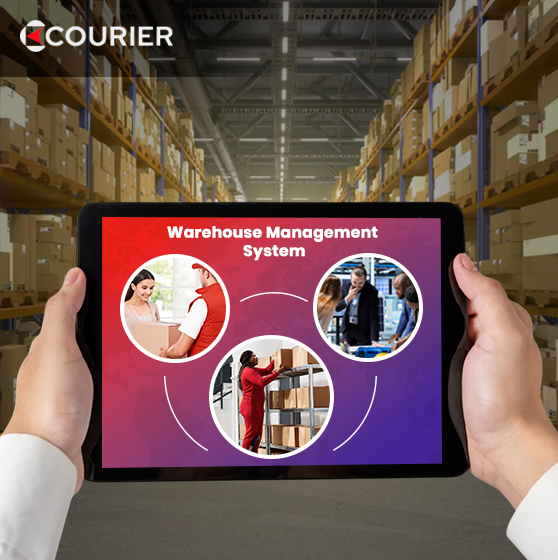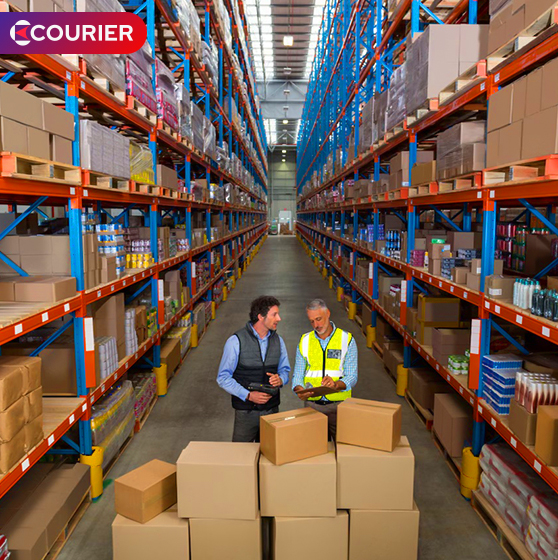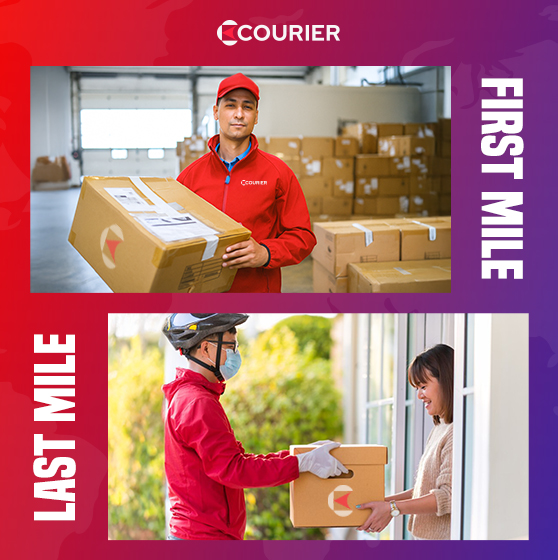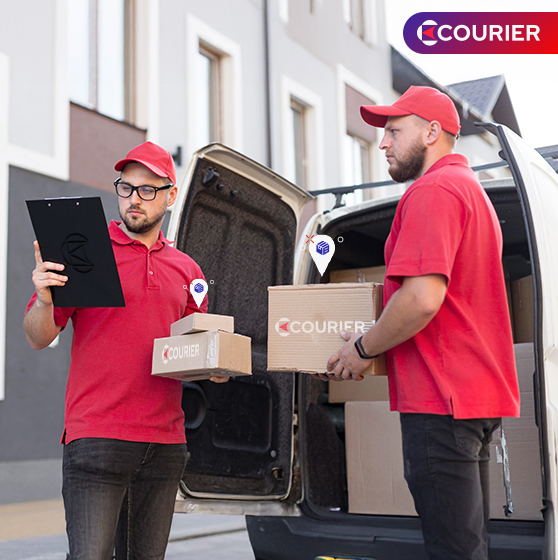
Globally, the online market is booming, driven by a quick and easy online shopping trend that involves a network of logistics. It starts with the first step – first mile delivery.
According to research, the eCommerce market is experiencing significant growth, and it may reach around $6.86 trillion in 2025.
Considering the e-commerce market, first mile delivery is a vital element of the supply chain. It is the initial point in the logistics process and impacts customer satisfaction.
With growing e-commerce sales, businesses understand the significance of first mile delivery in logistics. It involves transporting goods from their origin to a distribution hub or logistics center. The process can start from the manufacturing warehouse, supplier facility, or other business premises.
In this comprehensive blog, we will explore what first mile delivery is and its role in e-commerce operations. We will further discuss the differences between first mile and last mile delivery and how to optimize the initial stage.
Start reading!
Summary
First mile shipping involves transporting goods from their origin to the next logistics hub. It lays the groundwork for subsequent operations.
Efficient first mile logistics reduce costs, enhance delivery speed, and improve customer satisfaction.
Technologies such as Transportation Management Systems (TMS) and real-time tracking are revolutionizing first mile delivery.
Businesses that optimize their first-mile operations gain a competitive edge in today’s fast-paced eCommerce landscape.
Table of Contents
Understand First Mile Delivery
The first mile delivery phase is the starting point in the logistics process. In this stage, the items are moved from their source to the subsequent hub. This hub is a storage facility, sorting site, or distribution center.
This initial step is crucial for guaranteeing the prompt and effective distribution of products. It enables them to prepare for their subsequent passage through the supply chain process.
What is first mile delivery in logistics?
First-mile delivery forms the basis of every efficient supply chain. It is essential in many industries and e-commerce, just as crucial as final mile delivery, ensuring a smooth experience.
Neglecting the significance of first-mile delivery may lead to serious repercussions. It includes delays in arriving at the final destination and loss of customers.
In the online market, supply chains are growing more intricate, and consumer demands for quicker deliveries are increasing.
Companies are acknowledging that an improved first-mile delivery system reduces total shipping durations and expenses while increasing dependability.
Additionally, first-mile inefficiencies, such as tardy pickups or erroneous documentation, can disrupt the entire supply chain.
Role of First Mile in E-commerce Operations
In the initial phase of the supply chain, first mile delivery influences overall effectiveness and customer satisfaction.
A seamless and well-executed first-mile activity establishes the foundation for smooth last-mile delivery. It ensures providing you with a favorable consumer experience.
Streamlining first-mile delivery processes enables businesses to prevent delays, cut costs, and ultimately enhance the customer experience from warehouse to doorstep.
Optimizing and carrying out seamless first mile delivery operations helps businesses in different ways. Reduce expenses, avoid delays, and improve the journey from warehouse to front door. Wondering what the first mile is in logistics? It serves as the foundation stage.
It establishes the foundation for the middle mile and last mile delivery process. An efficient first mile process guarantees that products are placed accurately and ready for the next steps of the supply chain.
An insufficient and ineffective first mile delivery creates a disturbance in the supply chain efficiency. This as a result delays the last mile delivery process, affecting the overall logistics.
These issues can be easily solved by finding ways to enhance visibility, expand your supplier network, and implement a comprehensive warehouse receiving procedure.
Significance of the first mile in e-commerce operations –
Foundation for Efficient Logistics
The initial mile establishes the foundation for the remainder of the supply chain. The groundwork for efficient processes is to adequately package, mark, and move the items to the next center.
A well-organized first mile leads to fewer sorting mistakes, reduced transportation time, and an improved overall delivery schedule.
Inventory Positioning and Management
First-mile delivery plays a vital role in inventory management. This phase ensures items arrive at warehouses or distribution centers on time. This allows companies to keep ideal inventory levels.
Precise inventory placement minimizes the chances of stockouts and excess inventory. If not, this can hinder fulfillment and impact profitability.
Impact on Middle-Mile and Last-Mile Delivery
The effectiveness of first mile delivery directly impacts middle mile and last-mile delivery processes. Delayed or mishandled first mile shipments create bottlenecks, impacting the prompt delivery of products to customers.
On the other hand, a seamless first mile boosts later operations, improving delivery speed and dependability.
Cost Optimization
Inefficiencies in the first mile frequently lead to increased operational expenses. Delays, impaired products, or lost deliveries can increase costs as companies rush to fix problems.
Through the improvement of first mile operations, businesses reduce expenses, enhancing their financial performance.
Top Challenges of First Mile Delivery
Though first mile delivery is essential to the supply chain, it faces numerous challenges. These problems obstruct the initial delivery processes and affect the effectiveness of the supply chain.
Handling these issues enables companies to optimize their first mile operations. It improves overall supply chain management efficiency.
Common issues encountered in first mile delivery consist of:
- Inefficient processes
- Lack of visibility
- Manual operations
- Disparities in focus between first-mile and last-mile delivery
- Packaging drawbacks
Inefficient Processes
Ineffective procedures in the first mile delivery result in delays, higher expenses, and negative customer experiences.
For instance, wrong orders, production delays, and faulty inventory shipments impact other aspects of the supply chain process.
Understanding and handling these issues enables businesses to enhance their first mile delivery operations.
Lack of Visibility
Lack of visibility in first mile delivery causes issues, including:
- Delays and frustration for businesses and end-users
- Deliveries not received within the given time
- Leads to customer dissatisfaction
- Potential missed revenues
Inadequate Tracking And Visibility Can Result In These Issues
Companies revamp their first mile delivery management using proactive communication. It offers a strong solution to tackle these challenges with its real-time monitoring and advanced analytics features.
By providing live updates, companies can track and enhance their first mile in logistics in advance.
This results in:
It offers enhanced clarity regarding delivery statuses. It ensures businesses and customers are continually updated. Without proper tracking, it leads to a lack of communication about the status of the delivery.
Sending automated alerts minimizes customer inquiries regarding order statuses. Implementing WISMO (Where Is My Order) reduces the pressure on customer support teams.
Data-driven insights enable companies to optimize their delivery methods and boost operational efficiency. It reduces the chances of missed deliveries and increases customer satisfaction.
Manual Operations
Manual tasks in first mile delivery service may lead to mistakes and inefficiencies. It affects the overall supply chain effectiveness.
Automating some of the processes will improve the functioning of the delivery, including –
- Tracking
- Communications
- Notifications And Alerts
- Loading
- Staging
With this, the businesses can minimize manual mistakes and improve the effectiveness of their initial operations.
Packaging Pitfalls and Their Impact
Packaging issues, like incorrect packaging and labeling, lead to inventory damage and management complications.
Damaged and disorganized inventory results in higher expenses and may also cause customer discontent.
It is crucial to have proper packaging and labeling to prevent such issues and ensure a seamless first mile delivery.
First-mile vs. Last-mile Delivery
First and last mile delivery have different operational characteristics, but both focus on exceptional customer experiences.
First mile delivery emphasizes moving goods from their origin to the subsequent stage in the supply chain. Last mile delivery, on the other hand, focuses on bringing products straight to the customer’s desired location.
The first mile delivery is the first stage of the delivery segment of the supply chain. On the other hand, last mile delivery is the final step in the logistics process.
The initial step involves transporting the product from the producer to a shipping service via a courier. Whereas, last mile activities ends the delivery of the order.
Last mile delivery operations involve transporting products from a distribution center to the final destination. It is crucial to stay ahead of the competition and adopt creative strategies.
Gaining success in the first mile delivery process helps in carrying out the last mile delivery process.
Both greatly influence customer experience. Establishing robust communication between retailers and logistics companies is crucial for ensuring customer satisfaction with deliveries.
The delivery person for the last mile generally requests the customer to sign for order receipts or digitally scan the packages to update their status.
Let us delve into the further differences between first mile vs last mile delivery –
Process Flow
The initial mile entails moving products from the supplier to the storage facility. The final mile focuses on delivering goods from the storage facility to the customer.
Both these phases demand effective coordination and monitoring to guarantee seamless operations.
Impact on Business
First mile logistics provider influences inventory control and order processing. Whereas, last mile delivery directly impacts customer contentment.
Improving these phases is crucial for ensuring a smooth logistics process and boosting customer satisfaction.
Optimization Techniques
To optimize both first mile and last mile delivery:
- Optimize Routes: Utilize delivery route planning software to minimize travel durations.
- Enhance Visibility: Utilize live tracking to keep clients updated.
- Integrate Systems: Guarantee smooth integration of inventory and order management systems.
- Leverage Technology: Employ automated shipping systems to minimize human mistakes.
Implementing these strategies, businesses optimize their logistics operations, reduce expenses, and improve customer satisfaction.
Ways to Optimize First-Mile Delivery
The essential factor in enhancing first mile logistics is automating procedures. Costs can be transformed into growth capital by utilizing the appropriate technology.
Effective initial operations lead to improved efficiency in truck loading and delivery times. It becomes effective during the final segment of the supply chain.
Some manufacturers evaluate logistics and seek ways to enhance the speed of delivering the products to the destination.
They gather information across various operational stages in an inter-logistical manner. This results in the ability to provide their products at a reduced price, thus achieving a competitive advantage.
Reviewing the company’s workforce tasks provides insights on reallocating certain human responsibilities to automated systems.
This creates cost savings while enhancing employee satisfaction. It gives them more challenging responsibilities that might be perceived as a promotion. This, in turn, helps to cut back on turnover rates.
Here are the key strategies to optimize first-mile delivery:
1. Strategic Sourcing and Supplier Management
Strategic sourcing involves identifying suppliers to match your operational objectives. It guarantees that raw materials or finished products arrive on time and conform to quality criteria. Effective supplier management reduces delays and mistakes, establishing a solid base for the supply chain.
Evaluate supplier reliability: Consistently evaluate suppliers according to their delivery times, quality uniformity, and compliance with timelines. There are instruments such as supplier scorecards, which measure performance and assist in making informed choices.
Build collaborative relationships: Consider your suppliers as collaborators. Conduct collaborative planning sessions to coordinate on predictions and enhance synchronization. Collaborative forecasting tools can close communication gaps.
Implement dual sourcing: Depending on just one supplier can pose risks. Dual sourcing provides alternative options during disruptions, like shortages of raw materials or geopolitical conflicts.
Contractual agreements: Prepare contracts that specify penalties for delays and rewards for timeliness. It focuses on exclusive motivation to improve performance.
2. Efficient Order Management and Planning
Order management is essential for a seamless first-mile delivery process. Effective procedures minimize mistakes, accelerate order processing, and enhance overall operational flexibility. Planning guarantees that resources are distributed efficiently to address changes in demand.
Centralized Order Management Systems: Use software that consolidates orders from multiple sales channels into a single dashboard. It reduces manual errors and improves visibility.
Demand Forecasting: Leverage predictive analytics to anticipate future demand. By analyzing historical sales data, seasonal trends, and market conditions, businesses can adjust production and shipping schedules accordingly.
Batch Processing: Instead of handling orders individually, group similar orders into batches. It reduces processing time and ensures uniformity in packaging and shipping.
Flexible Cut-Off Times: Adjust order cut-off times based on peak and non-peak periods to maintain efficiency without overburdening logistics teams.
3. Optimized Transportation and Logistics
Order management is essential for a seamless first-mile delivery process. Effective procedures reduce mistakes, accelerate order processing, and enhance overall operational flexibility. Planning ensures the resources are distributed efficiently to address changes in demand.
Route optimization software: Utilize software like GPS-enabled tools that integrate orders from various sales channels into one dashboard. It minimizes human mistakes and enhances transparency.
Consolidation centers: Utilize predictive analysis to foresee upcoming demand. Through the examination of past sales figures, seasonal patterns, and market circumstances, companies modify their production and shipping timelines as needed.
Flexible fleet models: You can combine similar orders into batches and revive them. It decreases processing time and guarantees consistency in packaging and shipping.
Partnerships with local carriers: Modify order cut-off schedules according to peak and non-peak times. Ensure efficiency while preventing excessive strain on logistics teams.
4. Technology and Automation
Manual procedures are susceptible to mistakes and inefficiencies. Incorporating cutting-edge technologies simplifies processes, improves transparency, and enables data-oriented decisions.l
Transportation Management Systems (TMS): Streamline shipment planning, monitoring, and documentation. TMS platforms offer immediate visibility into shipment progress and possible delays.
IoT-enabled tracking devices: Installing IoT trackers on shipments helps oversee location, temperature, and handling conditions. It is especially beneficial for items that spoil quickly.
Automated sorting systems: Utilize conveyor belt systems that automatically categorize packages according to their destination hubs. It decreases manual work and accelerates the sorting procedure.
Barcode scanning and RFID: Employ sophisticated labeling systems for improved inventory monitoring. Barcodes and RFID tags provide precise identification and reduce losses.
5. Continuous Improvement and Data Analysis
Consistently reviewing logistics data helps in pinpointing bottlenecks and opportunities for enhancement. Ongoing improvement guarantees lasting effectiveness.
Track Key Metrics: Monitor figures such as lead times, transit damage rates, and shipment costs. Utilize dashboards to illustrate trends and identify inefficiencies.
Customer Feedback Loops: Collect feedback from customers regarding delivery timelines and packaging conditions. Use this data to address recurring issues.
Scenario Planning: Incorporate analytical tools to model “what-if” scenarios, enabling preparedness for potential interruptions such as supplier holdups or natural calamities.
Employee Training: Consistently educate logistics teams on optimal practices, updated tools, and technologies to uphold excellent standards.
Precision, Punctuality, Professionalism, and Dependable Deliveries with Courier Platform!
First mile delivery is just the start of the logistics process; it serves as the cornerstone upon which the whole supply chain depends.
By tackling inefficiencies and utilizing technology, businesses can convert first mile operations into a competitive edge.
Utilize the resources, techniques, and advancements available to satisfy customer demands.
The journey begins with the initial mile, but its impact is reflected in every interaction, ensuring success from start to finish.
First mile delivery is crucial to the entire supply chain and e-commerce ecosystem. Optimizing first-mile operations enables companies to boost overall supply chain effectiveness. It increases customer satisfaction and sustains a competitive advantage.
At Courier Platform, we bring you customized solutions for seamless delivery processes. The businesses manage their shipments with minimal disruption.
Our exclusive first mile services help businesses, including wholesalers, manufacturers, e-commerce owners, and retailers.
We ensure that the delivery management process is handled without any hassle. Rest assured of a smooth delivery of your product to your desired destination.
Choose the Courier Platform as your distribution hub in New Jersey. Get the top-notch value-added services logistics that go beyond the storage and distribution of goods.
Experience cost-effective, technology-based ecommerce delivery services that cover the entire journey, from first mile to last mile.
Dependable Deliveries, Every Time!
Recent Posts




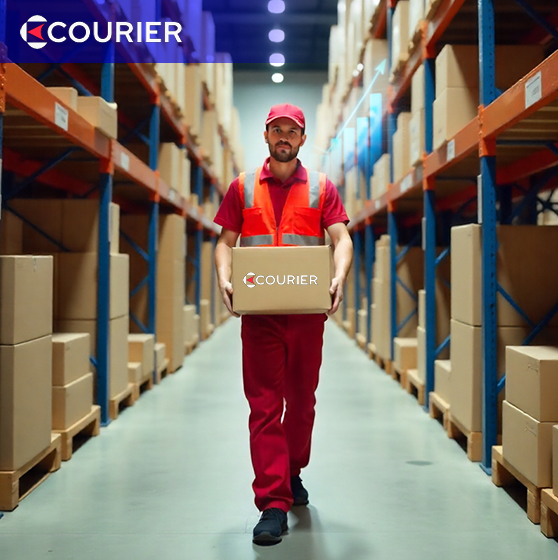
 25th September , 2025
25th September , 2025 
